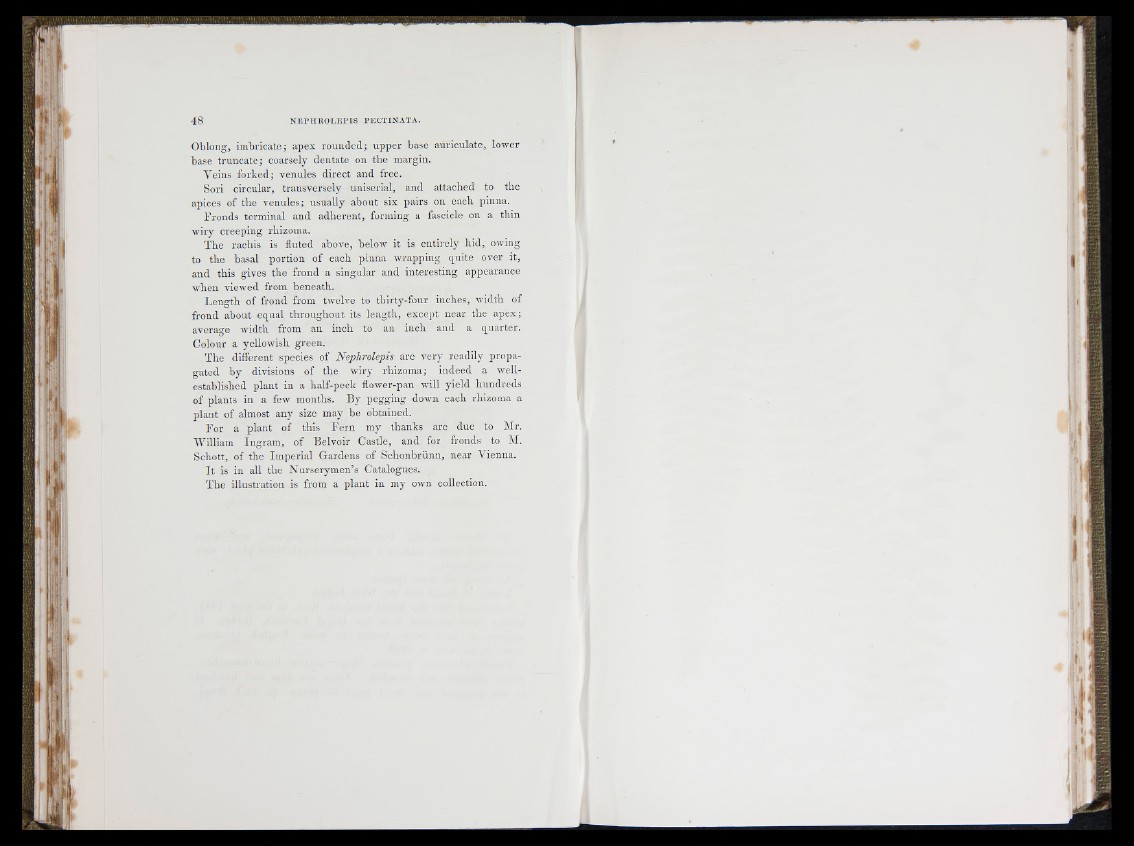
48 N E T H l lO L E P I S P E C T I N A T A .
I f
' Vi
I-:*'
Oblong, imbricate; ajiex rounded; upper base auriculate, lower
base truncate; coarsely^ dentate on the margin.
Veins forked; venules direct and free.
Sori circular, transversely uniserial, and attached to the
apices of the venules; usually about si.x pairs on each pinna.
F ronds terminal and adherent, forming a fascicle on a thin
wiry creeping rhizoma.
T he rachis is fluted above, below it is entirely hid, owing
to the basal portion of each pinna wrapping quite over it,
and this gives the frond a singular and interesting appearance
when viewed from beneath.
L ength of frond from twelve to thirty-four inches, width of
frond about equal throughout its length, except near the apex;
average width from an inch to an inch and a quarter.
Colour a yellowish green.
The different species of Neqdirolepis are very readily propagated
b y divisions of the wiry rhizoma; indeed a well-
established plant in a half-peck flower-pan will yield hundreds
of plants in a few months. By pegging down each rhizoma a
plan t of almost any size may be obtained.
F o r a plant of this F e rn my thanks are due to IMr.
William Ing ram, of Belvoir Castle, and for fronds to M.
Schott, of the Imp e ria l Gardens of Schonbriinn, near Vienna.
I t is in all the N u rserymen’s Catalogues.
The illustration is from a plant in my own collection.